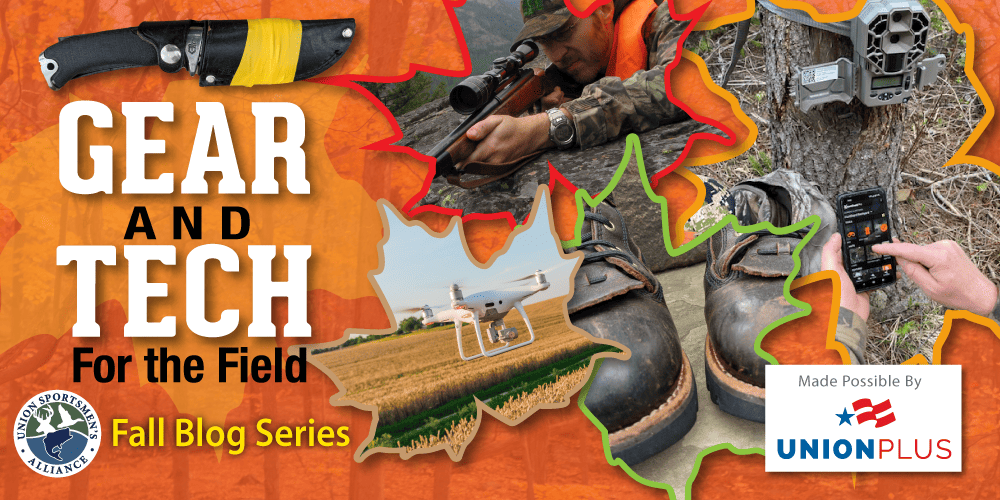Is There Too Much Tech in Hunting?
By PJ DelHomme
Hi-tech gadgets have invaded hunting, from drone deer recovery to laser-shooting rifle scopes. How much is too much?
A decade ago, I was bowhunting elk in a wilderness area on public land close to my home in Missoula, Montana. My buddy and I were stoked when we stumbled onto a wallow, but our excitement waned when we noticed a trail camera affixed to a tree nearby. Even though we were 14 miles from the trailhead, the discovery soured our sense of remoteness. We left the camera intact, but only after we left its owner with some personalized backcountry Kodak moments.

Trail cameras have come a long way in 10 years. Today, we can get real-time photos sent to our phones, telling us exactly when that big bull comes in to get a drink and play in the wallow. Is that sporting? It all depends, according to guidelines provided by the Boone and Crockett Club, a record-keeping and conservation organization founded by Theodore Roosevelt more than a century ago. The Boone and Crockett Club uses the term “fair chase” to describe a hunt where the animal has a sporting chance to evade your dinner table.
States like Nevada, Utah, and Arizona have banned the use of trail cameras seasonally or entirely, citing wildlife security issues. So many trail cameras (dozens) covered scarce water holes in Nevada that animals couldn’t come in to get a drink because the camera owners were entering the area so often to check them. At a 2022 Arizona Game and Fish Commission meeting where they banned the use of trail cameras, the commissioners listed their reasons for the ban, including that the use of cameras violates fair chase ethics.

In addition to trail cameras, there are myriad other options to scratch your techie itch. How about a rifle scope that doubles as a rangefinder for a minimum buy-in of $1,000? If you’re tech-savvy, you can link the scope to your phone via Bluetooth, input your ballistics data, elevation, wind, and relative humidity, and the computer tells you where to aim up to 2,000 yards away. Is that hunting or is that shooting? I’m not here to tell you either way, but in some states like Idaho, range-finding scopes are illegal. In Montana, it’s illegal to have an electronic site on your bow. I honestly like the idea of a rangefinding bow site that puts the pin right where I need to aim, but I follow the rules.
There are gadgets that help kill animals, and there are others that aid in their recovery. Lighted nocks on arrows are handy at dusk when a buck runs away after the shot. I’m color-blind, so I use a blue light to help that red blood pop against a green background. And some hunters are using drones to recover wounded deer. If that sounds a little over the top, consider that humans have used dogs to track animals since we domesticated them around 30,000 years ago. Both using drones and dogs for recovery are illegal in some states, but legal in others. In Alabama, you can use a drone to scout for deer.

The Pope and Young Club, which keeps records of big game taken with archery gear, won’t allow animals taken with the aid of drones to be entered into their records books. The Club’s policy states that use of drones violates fair chase principles. If a hunter uses a drone to recover a dead deer, the Boone and Crockett Club’s policy states that use of drones is okay in that instance. But if you discover the deer is still alive with a drone, that’s not fair chase.
Drone technology is still relatively young in the hunting world, but crossbows are not. Technically, they have been around since 400 B.C., but in the past couple of decades, advances in crossbow technology has them shooting more than 300 fps. When affixed with a scope, crossbows can get fairly accurate out to 100 yards. That’s not bowhunting, according to the Pope and Young Club. States like Montana allow crossbow hunting, but they are considered a firearm, so they can’t be used during bow season.
There are too many rabbit holes on this topic to dive into every one, but hopefully, you understand a couple of things. One, tech is here, and it’s not going away. And two, the role of tech in hunting is relative to each hunter. Granted, some black-and-white laws exist, but fish and game regulations can’t keep pace with changing technology. As a result, not everything legal is ethical. And what is ethical? Well, that’s really up to you.
With the aid of certain technology, a hunt can be over in minutes. That’s one way to fill the freezer, but how does that make any memories or stories to tell around the campfire? It doesn’t. I choose the tech I want to use based on my wallet and ethics. I like making stories and being tired after a long day of hunting. I also like to put meat in the freezer. It’s a balance. I just try to keep the hunt in hunting.
Check Out Other Articles in This Blog Series




